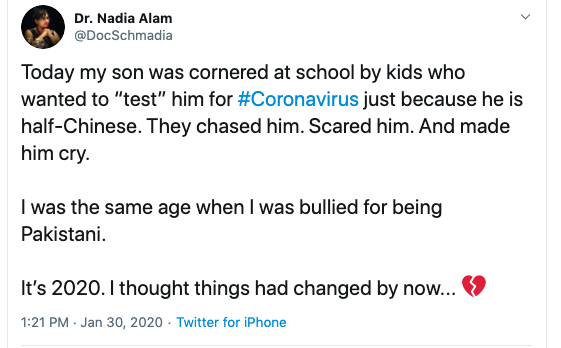by
User Not Found
| Feb 03, 2020
Brendan Hitchens, Program Coordinator, Asia Education Foundation

In the digital age of social media and free-flowing information, students need to be critical and divergent thinkers. As educators, we strive to create active and informed global citizens who are aware of the world and the role they play in it. But as good as the Internet is in connecting us, it is just as good at dividing us.
As the Novel Coronavirus continues to spread across the world, we see subeditors clutch to cheap race-based puns as headlines, news outlets scramble to be the first to break stories and bypass reputable fact-checking and hateful vitriol filling comment sections of online platforms. Like the virus itself, comments of racism are fast spreading, contagious and can cause immeasurable disruption. 
Image: Herald Sun front page makes a pun on the word 'Panda' to describe the Novel Coronavirus outbreak.
This week, Twitter has been filled with disturbing anecdotes of Australians being racially vilified on trams, in supermarkets, at sporting events, and on the streets. However, the most heartbreaking tales have been the stories from schools. There have been accounts of students, some as early as Prep, on their very first day of school, being excluded, taunted and bullied in playgrounds across the country for their cultural background.

Image: Tweet made by concerned parent following their Childs first day back at school for 2020.
For the majority of Australian schools, this time of the year - the beginning weeks of Term One, is used for building class culture and community, developing inclusion and establishing relationships.
It’s a time for students to create bonds; celebrating their similarities and differences and in turn developing core values of respect, empathy, care, compassion and open-mindedness.
The very antithesis of the ‘us and them’ mentality mass media is currently perpetuating. According to the Speak Out Against Racism (SOAR) survey released in 2017, “one-third of NSW and Victorian government school students have experienced racial discrimination from their peers.”
As educators, we should not be waiting until ‘Harmony Day,’ (or the United Nations International Day for the Elimination of Racial Discrimination, as most countries call it) rolls around on March 21 to challenge racial stereotypes, celebrate diversity and pay attention to the human rights of all. It must be done every day, starting with getting to know each and every student and the unique experiences, stories and strengths they bring to the classroom, diversifying classroom texts and teaching materials, and utilising the school and extended community to share wider voices and perspectives.
It is vital that the Intercultural Understanding Capability of the curriculum is thoroughly taught and used as a lens from which to reflect on attitudes, values, and beliefs.
This year we’ve already watched the world rally around Australia to support bushfire recovery. We’ve witnessed the best of humanity through volunteering, entrepreneurship and innovation and generosity.
Let the good that comes from this awful Novel Coronavirus situation be our reaction to it, and let’s use it as a teaching point for creating a better, globally connected world.
To learn how you can approach ICU in your classroom, the AEF has developed an– Achieving Intercultural Understanding In Schools toolkit.
Comment